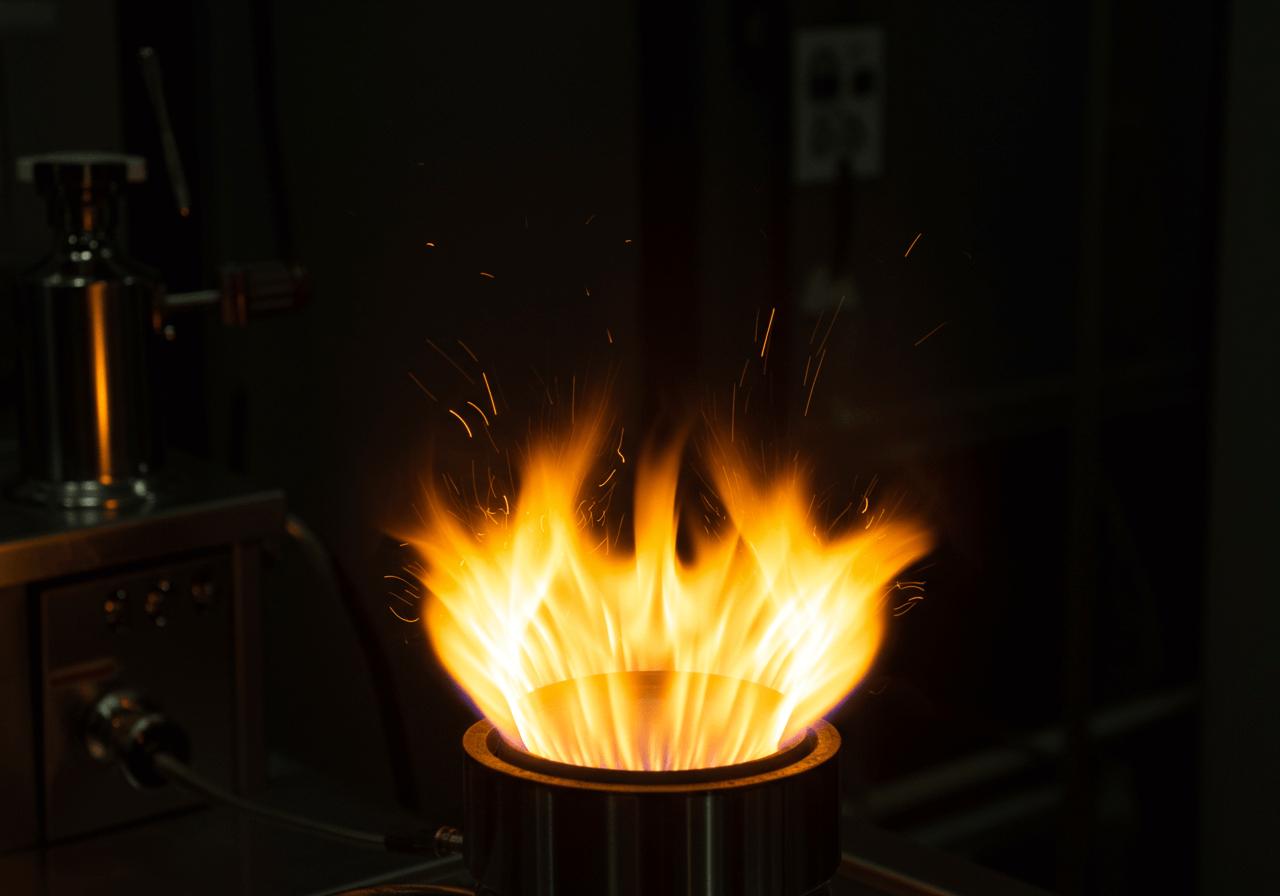Combustion underlies most energy production processes. This fundamental type of chemical reaction, where a fuel combines with oxygen (an oxidizer) to release energy as heat and light, forms the backbone of industrial civilisation while posing environmental challenges. The definition of combustion centers on this rapid oxidation reaction. Combustion is an exothermic chemical reaction between a fuel and an oxidizer, usually oxygen, releasing energy. Understanding this combustion process is important for energy needs and environmental concerns.
Key Takeaways
- Combustion is a high-temperature exothermic combustion reaction powering vehicles (using internal combustion) to power plants.
- Complete combustion of hydrocarbon fuels produces carbon dioxide and water (CO₂ + H₂O), while incomplete combustion creates harmful byproducts like carbon monoxide (monoxide) and soot.
- The reaction mechanism involves initiation, propagation (where the flame takes hold), and products formation, governed by combustion kinetics.
- Industrial applications span electricity generation, manufacturing (using gas or solid fuel), and waste management.
- Modern combustion science aims to balance utility with reducing environmental impact, including air pollution.
Understanding Combustion to Know The Science Behind Fire
At its core, combustion is a chemical reaction where a fuel combines with an oxidizer (typically oxygen in the air) in an exothermic process. This reaction releases energy stored in fuel molecules as thermal energy and light. It involves breaking chemical bonds in the reactants (fuel and oxidizer) and forming new bonds in the products of combustion. Observing a flame means witnessing this complicated oxidation in action. The heat and light represent energy released as molecular structures reorganise. This redox reaction involves fuel molecules being oxidized while oxygen molecules are reduced. Combustion is often associated with flames, but slower oxidation can also occur, sometimes even leading to spontaneous combustion under specific conditions, a type of combustion that starts without an external spark or flame.

Complete vs. Incomplete Combustion
Not all combustion reactions are equal. Complete combustion occurs when fuel is burned with sufficient oxygen (stoichiometric combustion represents the ideal chemically balanced ratio). For example, when methane burns completely, the chemical equation is: CH₄ + 2O₂ → CO₂ + 2H₂O. This ideal scenario maximises energy release from the methane molecule and ideally produces only carbon dioxide and water. In contrast, incomplete combustion happens when the amount of oxygen available is insufficient. This results in carbon monoxide, soot, and other partially oxidized compounds. This occurs in poorly ventilated spaces or inefficient combustion systems. For a hydrocarbon like octane (in petrol), complete combustion yields CO₂ and H₂O, while incomplete combustion would also produce carbon monoxide and less water, reducing efficiency and increasing harmful exhaust emissions. The specific products of combustion depend heavily on the amount of fuel and oxygen.
How Combustion Works: The Reaction Mechanism
Combustion doesn’t happen spontaneously in most cases as it requires activation energy to start combustion. This initial energy (from a spark or flame, or high heat) kickstarts a process often studied in combustion kinetics:
- Initiation: Activation energy affects oxygen or fuel molecules, creating reactive radicals.
- Propagation: These radicals attack other fuel molecules (like a hydrogen atom in a hydrocarbon), creating new radicals that sustain the combustion reaction.
- Products formation: The chain reaction continues until the fuel or oxygen is depleted, forming stable products like CO₂, H₂O, and potentially oxides like NOx at high temperatures.
This creates a self-sustaining chain reaction where combustion takes place. During hydrogen combustion, for instance, significant heat of combustion (about 242 kJ/mol) is released, demonstrating the highly exothermic nature. The heat generated often maintains the reaction. This is a form of rapid combustion.
Powering Our World: Industrial Applications
Combustion serves as the foundation for energy production. In power generation, combustion of hydrocarbons like coal, natural gas (methane), and oil (fossil fuels) fuels electricity production. These processes heat water to create steam for turbines. Transportation relies heavily on the internal combustion engine, where controlled combustion in a combustion chamber generates power. Beyond energy, combustion is essential in manufacturing:
- Metal refining (requiring high temperatures from burning fuel).
- Cement production.
- Glass manufacturing.
- Waste incineration using controlled combustion in air.
Gas turbines and even rocket engines (which carry both fuel and oxidizer) are other key applications relying on precisely controlled combustion processes.
Combustion Across Industries
The food industry uses combustion for heating. Metals manufacturing needs the extreme heat from combustion for melting/shaping. The chemical industry uses controlled combustion to produce compounds like ethanol precursors. Environmental management uses hazardous waste incineration. This controlled combustion safely destroys toxic materials, breaking down complex molecules.
Environmental Challenges of Combustion
Despite its utility, combustion presents environmental challenges. The production of carbon dioxide from complete combustion of hydrocarbon fuels contributes to climate change. Incomplete combustion releases carbon monoxide, particulate matter (soot), and unburnt hydrocarbons, causing air pollution. Other pollutants include:
- Nitrogen oxides (NOx), formed at high combustion temperatures.
- Sulfur dioxide (from sulfur in the fuel).
- Volatile organic compounds.
- Particulate matter.
These emissions drive regulations towards cleaner technologies, including exhaust treatment systems like catalytic converters which can oxidize harmful emissions like carbon monoxide at low temperatures (relative to the engine). Balancing energy needs and environmental protection is key in the study of combustion.
Technological Advances in Combustion Science
Modern combustion science has yielded innovations. Fuel-flexible combustion systems can burn various fuels, including renewables. Research areas explored by bodies like the Combustion Institute push boundaries. Oxyfuel combustion uses pure oxygen instead of air, increasing efficiency and reducing NOx. Some systems achieve significant NOx reduction through advanced combustion management. In aerospace, specialised combustion chambers in engines like Ramjets enable hypersonic flight. Fuel rocket engines represent extreme examples of controlled, high-energy combustion without relying on atmospheric oxygen.
The Future of Combustion Technology
The future balances performance with responsibility. Advanced melting systems show potential energy savings and CO₂ reductions by optimising air-fuel ratios and heat recovery. AI helps optimise combustion in real-time. Diesel and natural gas engine enhancements continue, coupling high thermal efficiency with cleaner operation via improved combustion chamber designs and exhaust treatment. Research into catalytic combustion and other novel form of combustion aims to further reduce emissions and improve efficiency, potentially allowing effective energy release at lower combustion temperatures. As we move towards sustainability, combustion technology will remain significant while integrating with alternatives.
Sources
Wikipedia – Combustion
Echemi – Article on Combustion
Ansys – What is Combustion
NREL – Combustion Research
FSU Chemistry – Combustion Lecture
Airprofan – Combustion Air Applications
Easy Llama – Combustion Definitions

